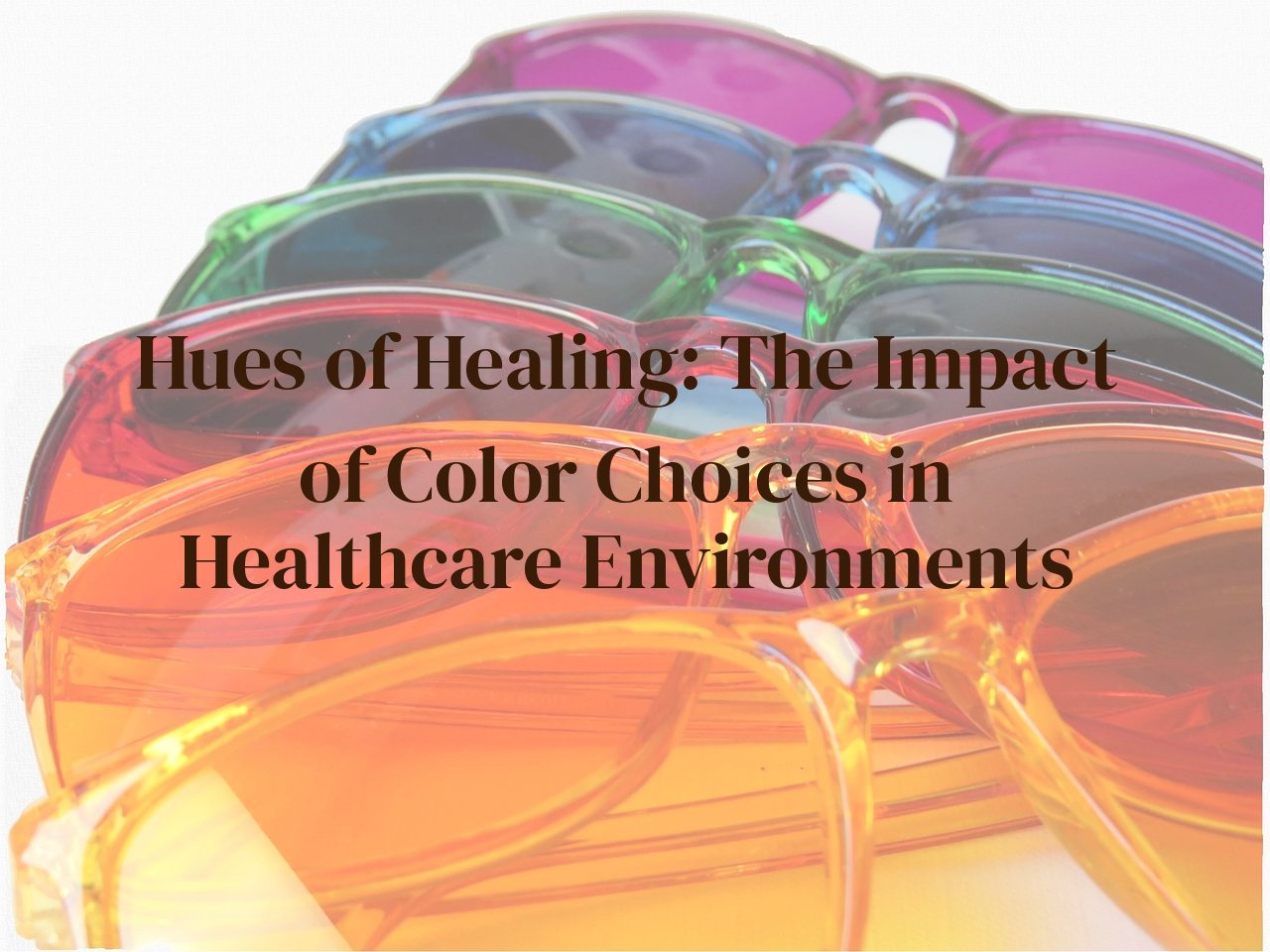
Imagine walking into a hospital room that radiates a tranquil blue, or waiting in a lobby bathed in soothing green hues. The strategic use of color within medical facilities is far from an arbitrary decision; it is a crucial element of design that can profoundly impact both patient well-being and staff efficiency. In this exploration of ‘Hues of Healing’, we delve into the significance of color psychology in the design of health care environments and uncover the transformative effects it can have on recovery, morale, and overall healthcare experiences.
As we venture through this post, you’ll learn how deliberate color choices can reduce stress, expedite healing, and create a sense of safety. We will tap into the essence of color psychology to understand how different tones can influence emotions and behaviors in medical settings, illustrating the importance of thoughtful design in promoting health and wellness. This knowledge is not only compelling but also practical, equipping you with insights that could be valuable in personal or professional spheres when considering healthcare experiences.
Table of Contents
The Science of Spectrums: Understanding Color Psychology
Delving into the palettes of well-being, as a health specialist who has witnessed the subtle yet profound effects of color psychology, I’ve come to realize how intrinsic colors are to our mental and physical health. My journey through hospitals to holistic health centers illustrated a recurring theme: color wields more than just an aesthetic appeal; it holds the power to manipulate mood and physiological responses.
Color psychology is the science that explores how hues impact human behavior and the overall perception of environments. In healthcare settings, from the sterile white of a laboratory to the nurturing blue of a pediatrician’s office, every shade has a strategic purpose. White is considered pure and clean, conducive to a sense of sterility important in medical facilities. Yet, too much can create a sense of clinical coldness, detaching patients from a healing connection.
Red, often used sparingly, can energize and capture attention, but an overdose can escalate anxiety. This is particularly true in areas where patients might already feel vulnerable. Conversely, the color green, emblematic of nature and vitality, is frequently employed to instill tranquility and promote wellbeing. It’s a testament to our evolutionary roots, where green signaled abundance and sanctuary.
Blue, the serene sky on a clear day, has a universally calming influence, lowering heart rate and even reducing appetite—a color of peace for the restless. I’ve observed numerous patients respond favorably to blue environments, often easing their journey toward recovery. Lastly, earth tones—those warm, grounding shades akin to the soil underfoot—exude stability and welcome, crucial in spaces where comfort and community are paramount.
Understanding the psychology behind these spectrums is not about decorating trends; it’s about leveraging visual therapy to enhance patient experience and outcomes. Every brushstroke in healthcare design has the potential to be a stroke of healing, and as we decode color psychology’s myriad hues, we paint a broader stroke in the grand mural of healthcare innovation.
Green for Growth: How Verdant Hues Influence Recovery
The enfolding embrace of green tones can act as a salve to the soul, a phenomenon I’ve observed firsthand in the quaint recovery rooms peppering a local clinic. There’s a particular shade, a soft sage, that seems to whisper promises of renewal to its inhabitants. This is no mere anecdote; the science of color psychology supports the restorative power of green. Verdant hues, reminiscent of the natural world, have shown to aid in lowering blood pressure and reducing anxiety, thereby enhancing the healing process.
During my years blogging on the intersection of healthcare and color theory, one study always floats to the surface, suggesting patients with a view of greenery from their windows tended to recuperate faster than those without. Such compelling research has led designers to infuse healthcare spaces with these growth-inspiring shades. It’s imperative to note that while lighter greens are found to soothe, darker greens can also play a role in instilling a sense of balance and stability, crucial during the often tumultuous journey to health.
The color green, especially in its softer forms, seems to inspire a subconscious connection to life’s regenerative cycles. As someone who has wandered the halls of various hospitals, the difference between stark, clinical environments and those kissed by nature’s palette is palpable. In one memorable instance, a patient told me that the green accent wall in her room gave her a ‘feeling of hope,’ as if each day carried fresh beginnings. Yes, while individual perception plays a role, the overarching sentiment aligns – green is the hue of healing.
Incorporating varying shades of green into the aesthetic of a medical facility isn’t just about splashes of color; it’s about creating a narrative of well-being. This understanding has revolutionized the way we look at healthcare environments, with verdant hues now seen not just as decorative choices, but as silent, supportive companions on a patient’s road to recovery.
A Dose of Blue: Calming Effects in Patient Rooms
The moment you cross the threshold into a patient room swathed in shades of blue, there’s an unmistakable wave of tranquility that seems to envelop you. As a healthcare consultant, I’ve witnessed firsthand the profound impact this serene color can have within medical environments. Blue hues, with their soothing essence, are like a balm for frazzled nerves, working their subtle magic on patients and family members alike. When consulting on facility designs, I always emphasize the importance of the color blue in areas where calmness is paramount.
In one particular hospital I worked with, we experimented by introducing a palette of soft blues in several patient rooms and monitored the outcomes. Not only did staff report a decrease in patients’ perceived anxiety levels, but there was also a discernible difference in the quality of patient rest. The color blue, especially in its paler forms, helps lower heart rate and blood pressure, essential in healing environments. With color psychology at the helm of my advice, the incorporation of blue facilitated an ambiance conducive to recovery.
It’s not just about a single shade—there’s a symphony of blues that can cater to different aspects of healing. For instance, a muted sky blue harnesses daylight’s restorative properties, amplifying the calming effects of natural light, whereas a deeper teal imbues a sense of stability and trust. By carefully selecting the specific blue hues for patient rooms, we can create a space that not only aids in recovery but also mitigates the sterile, cold feel that medical facilities often have.
But the impact of blue doesn’t stop at the color itself; it’s about creating an overall holistic environment. Complementing the blue with artwork that depicts serene landscapes or tranquil water scenes can further enhance the calming effect. Texture is another layer to consider—soft fabrics and smooth finishes in hues of blue can amplify the color’s soothing nature. In the end, it’s about curating an atmosphere that nurtures both the mind and the body in their most vulnerable states.
My goal as a healthcare advisor is always to champion environments that promote well-being at every level. The considered application of blue in patient rooms is a testament to the profound influence colors hold over our psychological and physiological states. Harnessing the restorative power of blue is more than an aesthetic choice—it’s a deliberate step towards holistic care and healing.
Warmth and Welcome: Utilizing Earth Tones in Common Areas
As I stroll through various healthcare facilities, the stark contrasts in atmosphere are palpable. I’ve always been particularly drawn to the common areas where earth tones are embraced. There’s something inherently comforting about the palette of browns, beiges, and creams, reminiscent of nature’s own canvas. In my experience, incorporating earth tones into these communal spaces within medical environments serves a specific and vital purpose.
In these settings, terracotta oranges, warm browns, and sandy beiges are not merely aesthetic choices; they’re strategic tools for fostering a sense of calm and belonging. Many studies corroborate that colors have the power to affect both psychological and physiological states. Earth tones, with their subtle and natural hues, are well-known for their ability to make large, sometimes intimidating spaces feel more intimate and nurturing. This atmosphere can reduce stress levels, which is particularly beneficial in healthcare facilities where anxiety runs high.
From waiting rooms to cafeterias, these colors promote a welcoming environment. Take for instance a waiting room I visited, where the integration of a creamy beige palette wasn’t simply about the color itself, but how it complemented the room’s natural wood accents and soft, ambient lighting. The result was a harmonious symphony of design that seemed to embrace patients and visitors alike, wrapping them in a cocoon of psychological comfort at a time when they may need it most.
In adding vases of dried reeds and a mural of a serene landscape, these earthy elements were not simply decor. They were a silent, steadfast reminder of the healing power of nature and how it can be mirrored even within the confines of a medical facility. Through my blog, I’ve seen an outpouring of responses from readers who’ve felt this warmth and acknowledge the thoughtful design choices that made their healthcare experience more positive.
Designing with purpose means that every brushstroke of color applied to a wall and every piece of earth-toned upholstery has the potential to contribute to healing. It’s a testament to the subtle, yet profound impact that design can have on health and well-being, a theme that I am keen to echo throughout my blogging journey in medicine and health.
Designing with Purpose: Integrating Color Psychology in Facility Layouts
The implementation of color psychology within healthcare settings is not a mere afterthought; it requires deliberate intention and informed choices. In my years crafting healing environments, I’ve observed firsthand the transformative effect of a purposefully designed color palette. As medical practitioners, we understand that every aspect of our facility can contribute to the healing process, and color is a formidable ally in this quest.
In the lobby, where first impressions set the emotional tone, we utilize soft, welcoming hues. A blend of gentle blues and serene greens greets patients, evoking a sense of tranquility and hope, while avoiding overstimulation. Transitioning into corridors and waiting areas, artwork featuring nature scenes harmonize with these colors, supporting a continuous therapeutic narrative.
When designing patient rooms, a spotlight on healing dictates a backdrop of calming blue. This isn’t arbitrary; research has linked this spectrum to lower heart rates and reduced anxiety, perhaps echoing the soothing properties of a clear sky. Strategic placements of warmer accents counterbalance the coolness, ensuring the space remains inviting rather than sterile.
Staff areas, often overlooked, merit careful chromatic consideration too. Here, we intersperse vibrant colors like yellow to stimulate mental acuity and offset the high-stress atmosphere. Break rooms with earthy tones provide a restorative nook for our healthcare warriors, recharging their empathy and focus.
The entirety of a medical facility’s layout becomes a dialogue in color, each room contributing to an overarching symphony of hues that aim to optimize wellbeing. From the deliberate positioning of colors to the intensity and saturation used, every choice is an integral thread in the fabric of the patient and staff experience. The power of color psychology in medical facilities isn’t just seen—it’s felt in the pulse of everyday healing.
Conclusion
Concluding our journey through the palette of medical facility design, we recognize that the colors surrounding us are not mere backdrops to our experiences but active participants in our healing process. Embracing the principles of color psychology in healthcare design isn’t just about aesthetic appeal; it’s about fostering environments that genuinely contribute to health and healing. As we assimilate the insights from ‘Hues of Healing’, let us look towards a future where every shade in our hospitals, clinics, and care centers is chosen with intention, transforming these spaces into sanctuaries of recovery and comfort.



